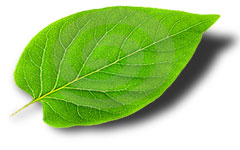Corporate Green Statement
We believe in being a responsible caretaker of our natural environment and strive to conserve and protect our renewable resources. At Digital Home Convergence Designs, we continually seek opportunities to reduce our carbon footprint and our impact on the planet. We have made it our on-going responsibility to improve the energy efficiency of our operations, minimize our waste, purchase materials from suppliers whose manufacturing practices are within EPA standards, and continue to build on our best practices of recycling and donations.
We encourage all our clients to make greener choices and we continue to educate our clients, along with our employee's, to make greener choices as well. Electronic forms are the most obvious, yet still the most underutilized of environmentally-friendly, cost-saving technologies. PDF is uniquely suitable for replacing paper forms.
Electronic Hazardous Waste (E-Waste)
Due to ongoing technological advancement, many electronic products become obsolete within a very short period of time, creating a large surplus of unwanted electronic products, or "e-waste". Disposing of e-waste in landfills has the potential to cause severe human and environmental health impacts. To avoid these risks, the California Electronic Waste Recycling Act (Senate Bill 50) was signed into law in 2004. SB50 established and funded a program for consumers to return, recycle, and ensure safe and environmentally sound disposal of Covered Electronic Devices (CEDs).
The California Electronic Waste Recycling Act requires retailers selling electronic products defined as CEDs in California to collect an electronic waste recycling fee from the consumer at the time of purchase. Beginning January 1, 2013, Digital Home Convergence Designs will collect, report and remit fees on all CEDs to the State of California as prescribed by the Act.
To find additional information on recycling electronic items and other related California Electronic Waste Recycling Fee information, visit: www.erecycle.org
Paper Waste Facts
-
Office paper is the most heavily recovered segment of
printing and writing paper (which also includes book and
magazine paper, junk mail, brochures, etc.).
Source: Waste Age, "Profiles in Garbage," November 2001
-
The paperless office, once predicted as a result of
information technology (IT), has not transpired.
Industry analysts estimate that 95% of business
information is still stored on paper.
Source: International Institute for Environment and Development (IIED)
-
The average daily web user prints 28 pages daily.
Source: Gartner group and HP
-
Paper manufacturing is the 3rd largest user of fossil
fuels worldwide.
Source: American Forest and Paper Association, (Garner, J.W.. Energy Conservation Practices Offer Environmental and Cost Benefits. Pulp & Paper, October 2002).
-
The US uses 25% of the world's paper products.
Source: American Forest and Paper Association
-
The average American uses more than 748 pounds of paper per year.
Source: American Forest and Paper Association
-
The US uses approx. 68 million trees each year to
produce 17 billion catalogues and 65 billion pieces of
direct mail.
Source: American Forest and Paper Association
-
It is estimated that paper consumption will rise by 50% by 2010.
Source: Food and Agriculture Organization of the United Nations, 1997:78
-
115 billion sheets of paper are used annually for
personal computers.
Source: Worldwatch Institute
-
700 pounds of paper are consumed by the average American
each year.
Source: Environmental Defense Fund, Champion Paper Mills
Last Updated: February 02 2014 09:22:38





